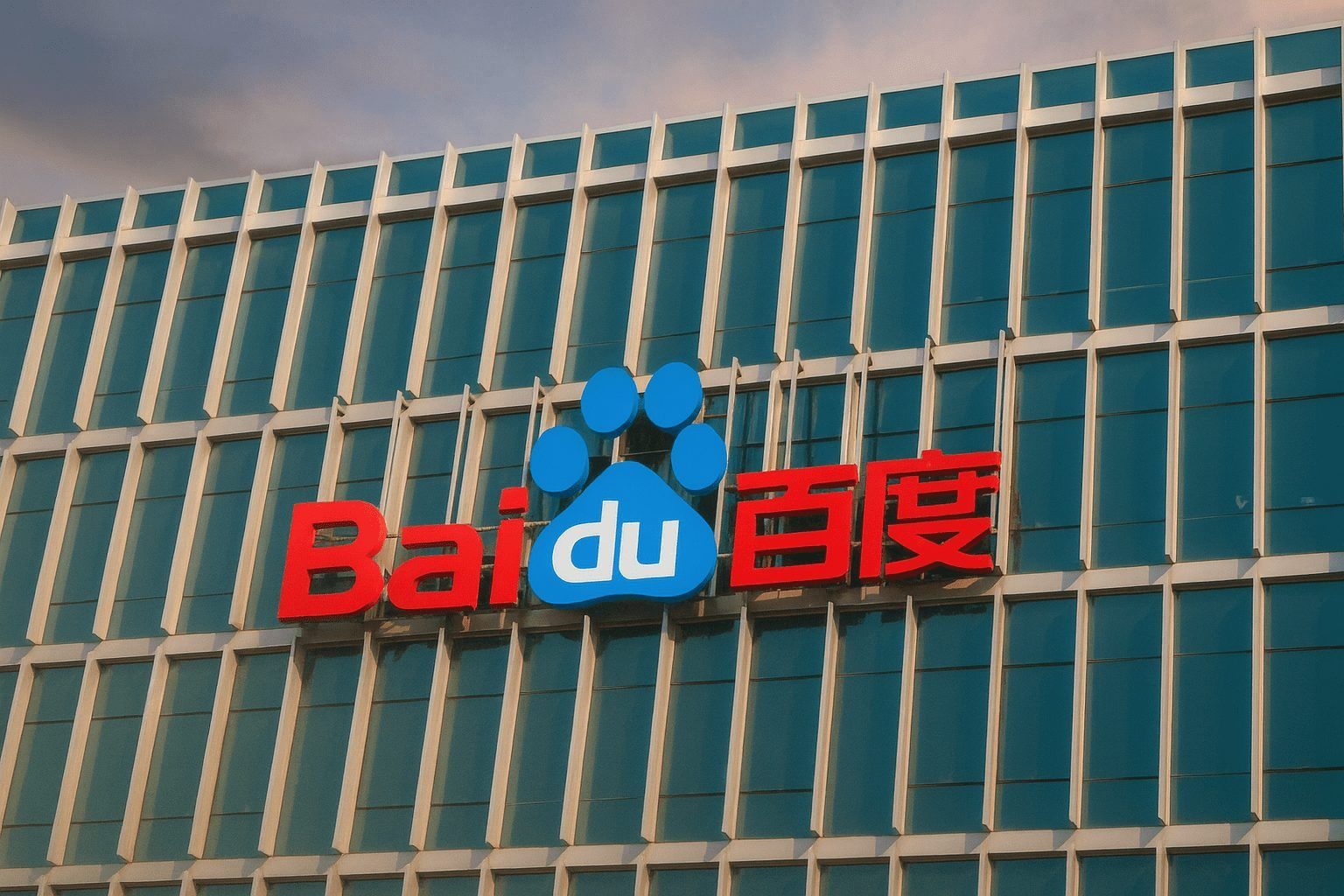Ticker: BIDU • Exchange: Nasdaq • Date: November 25, 2025
BIDU Stock Jumps as Wall Street Turns More Bullish
Baidu’s U.S.-listed shares (NASDAQ: BIDU) rallied sharply on Monday, November 25, 2025, as investors digested fresh analyst upgrades and continued to reposition around the Chinese search and AI giant’s high-spend transformation.
By the close, BIDU was trading around $119 per share, up roughly 7.5% on the day from Friday’s $110.95 close. [1] The move added billions of dollars to Baidu’s market value, lifting its market capitalization to around $41 billion. [2]
The rally comes just days after Baidu reported a revenue decline and sizeable net loss for the third quarter, even as its AI and cloud businesses continued to grow briskly. [3]
What’s Moving BIDU Today?
1. JP Morgan Upgrade and Aggressive Price Target
The clearest catalyst for today’s surge is a high-profile upgrade from JP Morgan:
- The bank raised its rating on Baidu from “Neutral” to “Overweight.”
- It also lifted its price target from $110 to $188 per share, implying potential upside of more than 50% from Monday’s closing level. [4]
According to coverage summarized by financial media, JP Morgan’s thesis centers on:
- Acceleration in Baidu’s AI cloud business over the coming years.
- Strong growth in Kunlun AI chip sales, which the bank expects could increase roughly sixfold by 2026. [5]
- A view that the market is underpricing Baidu’s AI assets, from its ERNIE large language model to its autonomous driving platform, Apollo Go.
Other analyst commentaries have also turned more optimistic in recent sessions, with some research notes suggesting the stock could rally 60–70% from prior levels if Baidu executes on its AI roadmap. [6]
2. Heavy Institutional Interest
Institutional investors continue to build positions in Baidu. A recent filing shows Sierra Summit Advisors LLC purchased roughly 128,915 shares of BIDU in the second quarter, signaling ongoing appetite for the name among professional money managers. [7]
While a single purchase does not change the story by itself, it reinforces the narrative that value‑oriented and AI‑focused funds see Baidu’s risk–reward as attractive after a long period of underperformance versus U.S. mega‑cap tech.
Q3 2025 Recap: Weak Ads, Strong AI and Cloud
Today’s move comes against the backdrop of a mixed Q3 2025 earnings report released last week.
Top-Line Trends
For the quarter ended September 30, 2025, Baidu reported: [8]
- Total revenue: RMB 31.2 billion (≈ $4.38 billion), down about 7% year over year.
- This was slightly above analyst expectations around RMB 30.7 billion, but still marked the company’s largest quarterly revenue drop in recent memory. [9]
The decline was driven by ongoing pressure in Baidu’s core advertising business, which remains tied to a sluggish Chinese macro environment and weak marketing budgets.
Segment Breakdown
According to Baidu’s results and subsequent analysis: [10]
- Baidu Core revenue: RMB 24.7 billion, down 7% YoY.
- Online marketing (ads): RMB 15.3 billion, down 18% YoY, reflecting cuts in ad spending amid China’s property downturn and cautious business sentiment. [11]
- Non‑online marketing revenue (largely AI cloud & other services): RMB 9.3 billion, up 21% YoY.
- iQIYI (video streaming) revenue: RMB 6.7 billion, down about 8% YoY as competition and content costs remain a drag. [12]
Profitability: Loss on Paper, Profit on Adjusted Basis
On a GAAP basis, Baidu posted a net loss of about RMB 11–11.2 billion for the quarter, driven mainly by large impairment charges on long‑lived assets. [13]
However, stripping out those non‑recurring charges, the underlying business looked healthier:
- Non‑GAAP net income: RMB 3.8 billion (≈ $530 million). [14]
- Non‑GAAP diluted EPS: RMB 11.12 (≈ $1.56 per ADS), beating consensus by roughly 30% even as earnings fell about a third from a year earlier. [15]
- Non‑GAAP Baidu Core operating margin: around 9%, indicating the core engine is still profitable despite the ad slump. [16]
For investors, the key question is whether these one‑time charges truly mark a clean‑up of legacy assets or hint at more structural profitability issues if ad revenues remain under pressure.
Baidu’s AI Pivot: ERNIE 5.0, Cloud, and Robotaxis
Despite the headline revenue decline, Baidu’s results and recent announcements highlight a company that is doubling down on AI‑driven growth.
ERNIE 5.0: Baidu’s Flagship Foundation Model
At its Baidu World 2025 event earlier this month, Baidu introduced ERNIE 5.0, the latest version of its large foundation model: [17]
- ERNIE 5.0 is described as “natively omni‑modal,” able to understand and generate text, images, audio, and video in an integrated way.
- It powers applications through ERNIE Bot and Baidu AI Cloud’s Qianfan platform.
- Baidu simultaneously rolled out upgrades to tools like Miaoda/MeDo (no‑code AI builders), GenFlow (an AI agent platform with over 20 million users), and Oreate, an AI workspace with more than 1.2 million users. [18]
Management has said that AI‑powered businesses generated roughly RMB 10 billion in revenue in Q3, growing more than 50% year over year, underscoring how quickly AI is becoming a meaningful contributor. [19]
AI Cloud and Enterprise Services
Baidu’s AI cloud business is another bright spot:
- AI Cloud revenue: about RMB 6.2 billion, up roughly 21% YoY in Q3. [20]
- Non‑online marketing revenue in Baidu Core (cloud and other AI‑driven businesses) rose 21% YoY to RMB 9.3 billion. [21]
JP Morgan now expects Baidu’s cloud revenue growth to accelerate toward 61% in 2026, helped by surging demand for its Kunlun AI chips, which the bank projects could reach sales of RMB 8 billion in 2026. [22]
If those projections materialize, cloud and AI infrastructure could meaningfully reshape Baidu’s overall growth profile.
Apollo Go: Monetizing Autonomous Driving
Baidu’s autonomous driving platform Apollo Go is also gaining scale:
- The robotaxi service has expanded to 22 cities globally. [23]
- Recent disclosures point to around 250,000 weekly rides and a cumulative ride count in the millions. [24]
While Apollo Go is not yet a major earnings contributor, it is a strategic optionality play: if robotaxis become commercially viable at scale, Baidu will own a full stack spanning mapping, software, AI chips, and ride‑hailing operations.
Valuation Check: Is BIDU Still Cheap After the Rally?
Even after today’s jump, Baidu’s valuation looks modest compared with many Western AI leaders — but the headline numbers are complicated by impairments and China‑specific risks.
Key Metrics (Approximate, as of November 25, 2025)
- Share price: ≈ $119
- Market cap: ≈ $41 billion [25]
- Trailing 12‑month revenue: ≈ $18–18.5 billion [26]
- Price‑to‑Sales (P/S): about 2.2× based on those figures (market cap ÷ TTM revenue).
- GAAP P/E (TTM): distorted by recent impairments, with some sources putting it near or above 35–40×. [27]
- P/E excluding non‑recurring items: closer to 13–15×, based on adjusted EPS without one‑time charges. [28]
- Price‑to‑Book (P/B): roughly 1.0× book value per share. [29]
- 52‑week range: about $74.71 to $149.51. [30]
From a value investor’s lens, a global AI and cloud player trading at:
- ~2× sales,
- ~1× book value, and
- a low‑teens multiple of normalized earnings,
can look attractive — if you are comfortable with the China macro, regulatory, and geopolitical overhangs.
On the flip side, some valuation models that emphasize slower growth and higher risk — such as certain “fair value” screens — suggest Baidu might actually be trading above their estimated intrinsic value, underscoring just how debated the stock remains. [31]
Major Risks Still Shadowing the BIDU Story
1. China’s Economy and Advertising Slump
Baidu’s core search and display ad business is directly exposed to China’s economic health:
- Q3 revenue decline was driven primarily by an 18% drop in online marketing revenue, as advertisers pulled back amid a weak property sector and broader macro uncertainty. [32]
If China’s recovery remains uneven, ad budgets may stay under pressure, delaying a return to top‑line growth.
2. Regulatory and Policy Uncertainty
Investors in Chinese internet stocks have endured years of shifting regulations, from content controls to antitrust probes. Baidu has previously been warned by regulators over content issues, and the broader sector remains on a short leash. [33]
New rules around AI, data, and algorithms could add compliance costs or limit monetization in high‑growth areas like generative AI and autonomous driving. [34]
3. High AI Investment and Balance Sheet Impact
Baidu has invested over RMB 100 billion in AI since 2023, according to some analyses, and recently took a RMB 16+ billion impairment charge. [35]
While such investments may be necessary to stay competitive, they:
- Depress near‑term earnings,
- Raise the risk of further write‑downs if certain bets don’t pay off, and
- Make it harder for investors to interpret true underlying profitability.
4. Credit Rating Outlook Turned Negative
In September, Fitch Ratings affirmed Baidu’s long‑term rating at “A” but revised the outlook to “Negative,” citing heightened risks around the AI transition and execution compared with other Chinese internet peers. [36]
That doesn’t signal imminent distress, but it’s a reminder that rating agencies are watching closely as Baidu shifts from a cash‑rich search business to capital‑intensive AI infrastructure and services.
What to Watch Next for BIDU Investors
For traders and longer‑term investors tracking Baidu after today’s move, several catalysts and checkpoints stand out:
- Ad Revenue Stabilization
- A slower rate of decline — or better, a return to growth — in Baidu’s core advertising business would go a long way toward reassuring the market that the worst of the cyclical pain is over. [37]
- Sustained AI & Cloud Momentum
- Watch upcoming quarters to see if AI cloud growth remains above 20%+ YoY and whether management can edge margins higher as scale improves. [38]
- Monetization of ERNIE 5.0 and AI Agents
- Adoption trends for ERNIE‑powered services, including Qianfan, GenFlow, and MeDo, will help determine whether Baidu can convert AI buzz into durable high‑margin revenue. [39]
- Apollo Go Commercial Progress
- Regulators’ stance on robotaxis, the pace of geographic expansion, and any disclosures on unit economics will be key to valuing Apollo Go beyond optionality. [40]
- Further Analyst and Rating Actions
- After JP Morgan’s upgrade and price‑target hike, investors will watch whether other major houses follow suit — or whether credit agencies like Fitch tighten their outlook further. [41]
- Macro and Geopolitics
- Any signs of easing U.S.–China tech tensions, better property‑market data, or stimulative policy measures in China could improve sentiment for the entire Chinese internet sector, including Baidu. [42]
Bottom Line: A High-Risk, AI-Heavy Re‑Rating Story
On November 25, 2025, BIDU is trading like a turnaround‑plus‑AI growth story:
- The short‑term narrative is being driven by analyst upgrades, attractive relative valuation metrics, and enthusiasm around AI and autonomous driving.
- The medium‑term reality is that Baidu’s legacy ad business is shrinking, its AI bets are expensive, and China‑specific risks remain firmly in play.
For investors, Baidu now sits at the intersection of:
- Deep value characteristics (low P/B, modest P/S), and
- High‑beta growth aspirations (cloud, chips, ERNIE 5.0, Apollo Go).
That combination can be rewarding — but also volatile.
Disclaimer: This article is for informational and educational purposes only and does not constitute financial, investment, or trading advice. Always do your own research or consult a licensed financial advisor before making investment decisions.
References
1. www.investing.com, 2. stockanalysis.com, 3. www.reuters.com, 4. finance.yahoo.com, 5. www.investing.com, 6. www.benzinga.com, 7. www.marketbeat.com, 8. www.reuters.com, 9. www.reuters.com, 10. www.alpha-sense.com, 11. www.reuters.com, 12. www.alpha-sense.com, 13. www.reuters.com, 14. ir.baidu.com, 15. www.alpha-sense.com, 16. www.alpha-sense.com, 17. www.eweek.com, 18. www.stocktitan.net, 19. ir.baidu.com, 20. www.alpha-sense.com, 21. www.reuters.com, 22. www.investing.com, 23. www.investing.com, 24. www.stocktitan.net, 25. stockanalysis.com, 26. www.gurufocus.com, 27. www.gurufocus.com, 28. www.gurufocus.com, 29. www.investing.com, 30. www.investing.com, 31. valueinvesting.io, 32. www.reuters.com, 33. rankingdigitalrights.org, 34. seekingalpha.com, 35. www.ainvest.com, 36. www.fitchratings.com, 37. www.wsj.com, 38. www.investing.com, 39. www.stocktitan.net, 40. www.wsj.com, 41. finance.yahoo.com, 42. www.reuters.com







